Ile aux Aigrettes (French for Egret Island) is a protected islet off the southeastern coast of Mauritius, near the city of Mahebourg. Lying about half a km off the coast at Pointe d’Esny Beach, the island has a round shape with a diameter of 500 meters.
Since 1965, Ile aux Aigrettes has been designated a nature reserve to conserve its rare ecosystem. It is covered by what is called Mauritius Dry Coastal Forest: a plant community that once, in pre-human times, occupied much of coastal Mauritius. This invaluable forest harbors several endemic plant species and shelters critically endangered animals.
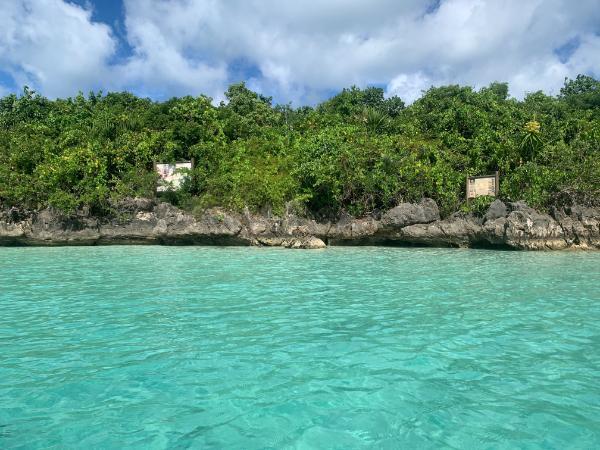
Affiliation disclosure: By purchasing goods or services via the links contained in this post, I may be earning a small commission from the seller's profit, without you being charged any extra penny. You will be thus greatly helping me to maintain and keep enriching this website. Thanks!
Visit Ile aux Aigrettes, Tickets, Price
During our two-month stay in Mahebourg, I observed Ile aux Aigrettes almost daily on my afternoon runs to Blue Bay. Something about its lonely, lush presence amid the tranquil lagoon tempted me to visit it before we even learned of its acclaimed ecological significance. Once we discovered its status, we promptly added it to our travel itinerary.
Our original idea was to rent a kayak and paddle it. But soon we realized that a visit to Ile aux Aigrettes is permissible only by joining a tour organized by the Mauritian Wildlife Foundation which oversees the reserve. So we saved our arm strength for a kayaking trip from Mahebourg to Blue Bay instead, and near the end of our time in Mauritius, we booked the tour on MWF’s official site.
The ticket for the basic 1.5-hour tour cost €21 per person. There was also a 2.5-hour “VIP” option for €50. Tours departed every half hour from 9:30 to 14:30 and were offered in English and French. While not certain, I assume it’s possible to join the tours on the spot without prior booking.
How to get there
The tours to Ile aux Aigrettes depart from the nature reserve’s headquarters, a little hut at Pointe Jerome, right opposite the island (location). If you don’t drive, the closest bus stops are in Mahebourg and Blue Bay. From either of these bus stops, you can either walk (30–40 minutes) or take a taxi (5–10 minutes). For taxi services, I recommend using this site. You might also be interested in this combination tour to Ile aux Aigrettes and Blue Bay including hotel pick-up.
Ile aux Aigrettes tour
We drove to Pointe Jerome shortly before our scheduled departure, parked our bike easily (there was plenty of space for cars, too), and proceeded to the office. We were a tad worried because we hadn’t received a confirmation for our late-last-night booking, but it had gone through fine. Our guide, a polite and friendly young woman, showed us to a comfy couch while the final preparations were made.
We soon embarked on a yellow speedboat, with a dozen other travelers, and set off. Some ten minutes later, we disembarked on a concrete quay at the islet’s northern coast. Several sailboats and yachts were anchored around, their passengers relishing dips in the crystal waters. Boat tours visit Ile aux Aigrettes commonly, but they aren’t permitted to let people on the island. You can check out some popular ones below if you’d like to explore more of the stunning Mauritian coastline.
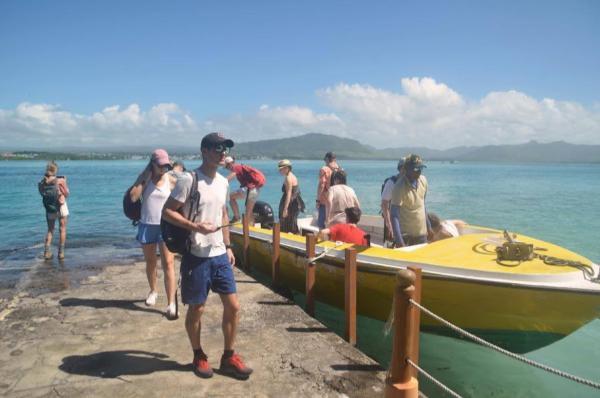
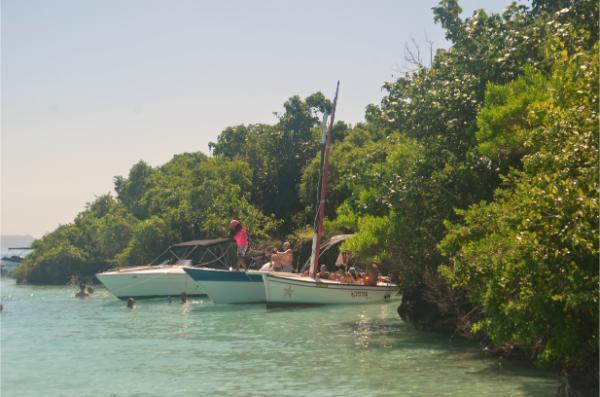
As soon as we entered the forest, where the quay ended, we were greeted by a giant tortoise. He was a 100+ year-old male, one of about 50 adult individuals reintroduced to Ile aux Aigrettes from Madagascar. The islet’s original tortoises, which had longer necks to reach higher vegetation, went extinct in the 18th century. The oldest member of the current population, whom we saw later deeper in the forest, was named George and was more than 150 years old.
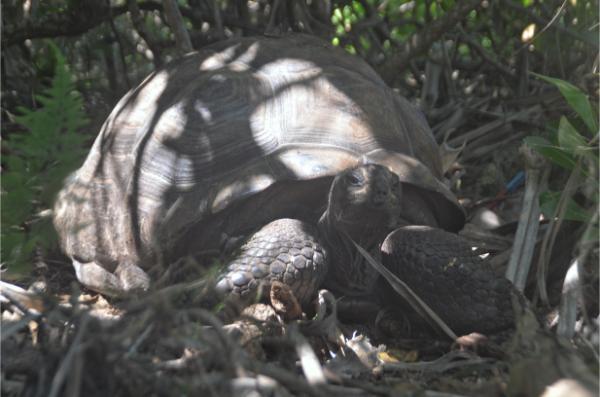
In the company of the tortoise, standing on a branch, loitered a striated heron. He was either too chummy with people or, most likely, injured. I approached him within a breath’s reach, and he didn’t show the slightest urge to fly away.
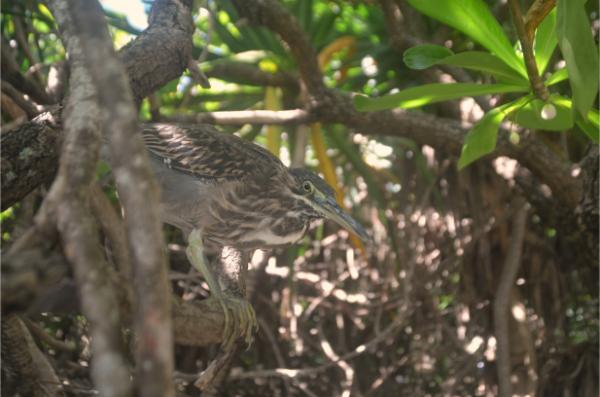
Overtaking several leisurely tortoises along the trail to the interior, we stopped by a large cage. It was used to monitor baby tortoises before their release at two years of age. A few flying foxes also inhabited this space, fluttering about within the enclosure.
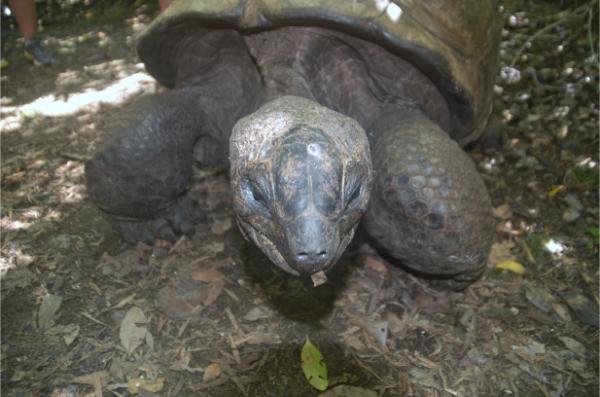
Our next stop was a bird feeder they had installed to allure the island’s most famous creature: the pink pigeon. Indeed, one hung out on the spot, pink as a cherry blossom. But it flitted away before I could pull out my camera, and we didn’t see another one. At least, I got a chance to snap a shot of a Madagascar fody. While not as rare as the endemic Mauritius fody, this was redder and prettier.
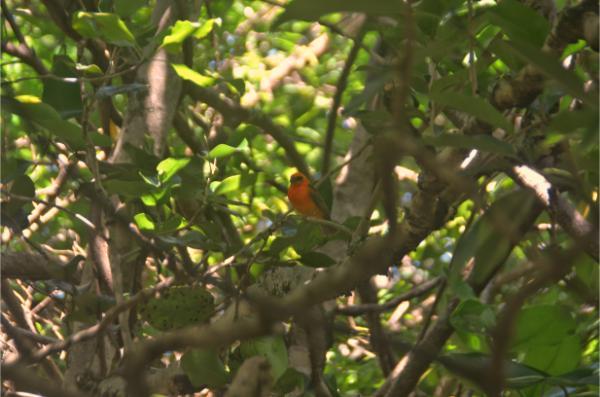
As for flora, our guide showed us two endemic species of ebony trees, the elegant blue latania, an enormous pandanus between whose leaves the islet’s ornate day geckos lay their eggs, and a shade house where they fostered various unique species.
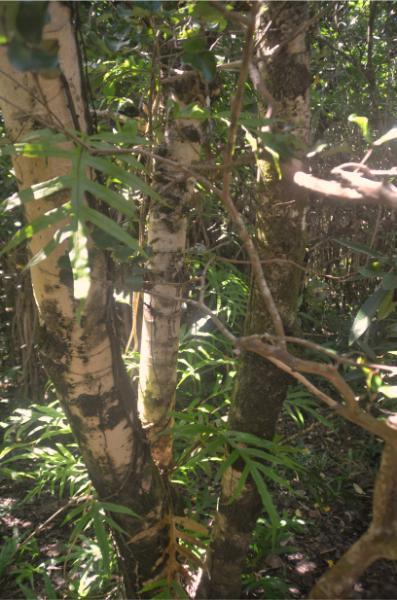
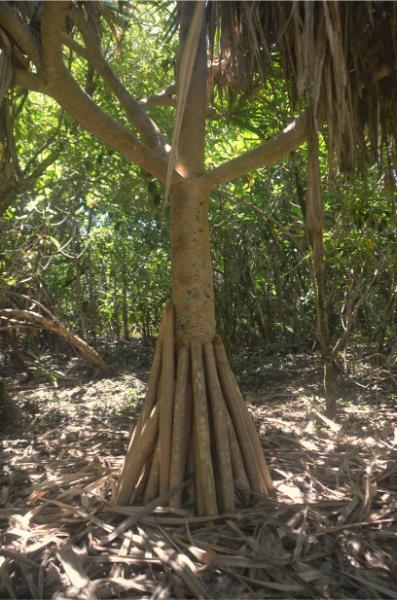
Regarding inanimate sights, we saw a dodo statue and a massive WW2 cannon. The tour concluded in a little museum/souvenir shop. It exhibited bronze figures of extinct Mauritian animals, including a tortoise head with a donations slot on its tongue.
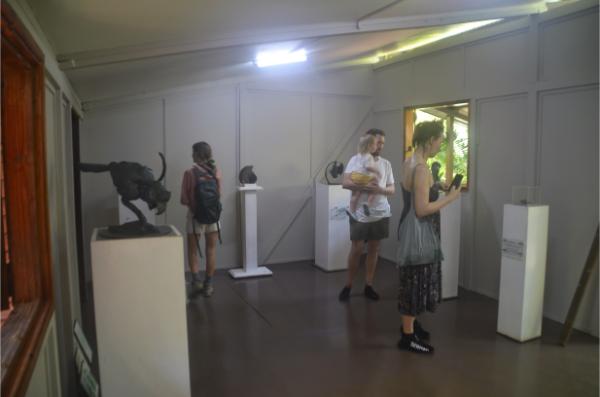
Video
Photos
View (and if you want use) all my photographs from Ile aux Aigrettes in higher resolution.
Accommodation and activities in Mauritius
Stay22 is a handy tool that lets you search for and compare stays and experiences across multiple platforms on the same neat, interactive map. Hover over the listings to see the details. Click on the top-right settings icon to adjust your preferences; switch between hotels, experiences, or restaurants; and activate clever map overlays displaying information like transit lines or concentrations of sights. Click on the Show List button for the listings to appear in a list format. Booking via this map, I will be earning a small cut of the platform's profit without you being charged any extra penny. You will be thus greatly helping me to maintain and keep enriching this website. Thanks!
